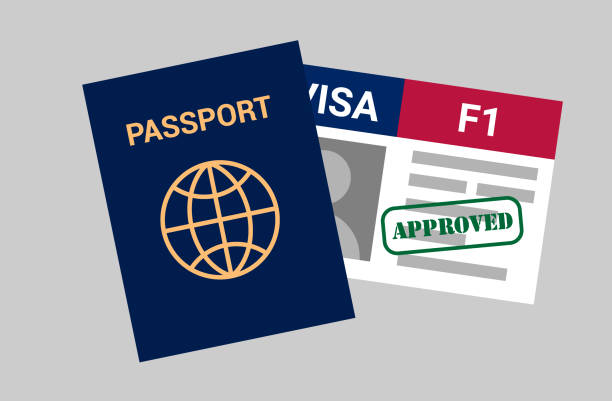Why do international students have restricted work hours?
So, I want to know: Why do international students have restricted work hours? For many international students, pursuing education abroad offers a chance to explore new cultures, gain a world-class education, and chase their dreams. However, one challenge stands out for this group—restricted work hours. Why do these limitations exist, and how do they influence the lives of international students?
Whether you’re a student, academic advisor, or employer, understanding the “why” behind these policies is crucial. This blog will unpack the reasons, global rules, and their impacts, providing clarity on this important topic.
Understanding International Student Work Limitations

What Are Restricted Work Hours?
Restricted work hours refer to the legal limits set on the number of hours international students can work while studying abroad. Typically, this limitation is stated in their student visa conditions. The goal? To ensure the student prioritizes their studies while maintaining compliance with immigration policies.
Common Restrictions Globally
International students in most countries face similar rules limiting work to a range of 10-20 hours per week during term time. For instance:
- United States (F-1 visa) allows up to 20 hours/week on-campus during classes.
- United Kingdom (Tier 4 visa) caps work hours at 20 hours/week during term time.
- Canada (Study Permit) allows students to work 20 hours/week.
- Australia (Subclass 500 visa) used to cap hours at 20 hours/week but recently adjusted this limit temporarily.
Despite slight differences, the theme is consistent—work hours must remain part-time during studies.
Historical Context of Work Restrictions
Evolution of Student Work Policies
The idea of limiting international students’ work hours isn’t new. Over the decades, as international education surged, governments imposed frameworks to regulate labor accessibility for these students. Major milestones, such as the introduction of specific student visas post-World War II, brought these policies into standard practice globally.
Key Milestones Shaping Regulations
- The 1980s: Canada introduced specific rules around work allowances for study-permit holders.
- The 1990s: Australia created additional work rights via student visa subdivisions.
- Recent Shifts: Countries like Australia have experimented with relaxing limits post-pandemic to address workforce shortages.
Past and present, these policies aim to craft a balance between education, work, and immigration control.
Why do international students have restricted work hours?

There are a few key reasons why international students often have restrictions on the number of hours they can work while studying abroad. Here are some of the most prominent reasons Behind Restricted Work Hours
Protecting Local Job Markets
Governments typically prioritize employment opportunities for their citizens and residents. Allowing unrestricted hours for international students could intensify competition in industries like hospitality or retail. By capping hours, student jobs co-exist without overwhelming local job seekers.
Academic Performance Prioritization
Juggling work with academics can be a delicate balancing act. Excessive work hours have been linked to declining grades and increased drop-out rates. By limiting work hours, students can focus on their studies, ensuring they meet their academic goals.
Immigration Compliance
Student visa programs are built on the principle that the primary purpose of entering the host country is education. Unrestricted work opportunities could lead to visa misuse. By monitoring work hours, immigration authorities maintain the program’s integrity.
Global Perspectives on Work Restrictions
Different countries approach international student work policies through unique lenses. Here’s a look at some key players:
United States
- Students on F-1 visas can work on-campus for up to 20 hours/week while classes are in session.
- Off-campus work is highly restricted and often requires special authorization, such as OPT (Optional Practical Training) or CPT (Curricular Practical Training).
United Kingdom
- Tier 4 visa holders can work up to 20 hours/week during term time.
- Work options are often limited to part-time, with restrictions on self-employment or freelance opportunities.
Canada
- Students with valid Study Permits can work off-campus for up to 20 hours/week, often in roles ranging from customer service to internships.
- Post-graduation, pathways like the Post-Graduate Work Permit allow work without restrictions.
Australia
- The Subclass 500 visa traditionally capped students at 20 hours/week.
- Post-2022, temporary changes allowed unlimited work hours to support pandemic recovery efforts.
Impact of Restricted Work Hours on Students
Financial Challenges
The reality of studying abroad often includes managing tuition, accommodation, and living expenses. With a limited earning capacity, many students find themselves stretched thin financially. Stories surface highlighting those who work multiple roles during permitted hours just to cover basic expenses.
Academic Stress
Balancing deadlines, exams, and a job can be overwhelming. Restricted hours help mitigate this stress, though they don’t eliminate it entirely. Time management becomes a critical skill for these students.
Benefits of Restricted Work Hours

Interestingly, limiting work hours benefits students in various ways:
- Enhanced Academic Outcomes: Focused study time can lead to better grades and skill mastery.
- Skill Development: Even within limited roles, students gain real-world work experience, often tied to soft skills or team dynamics.
Potential Drawbacks of Work Restrictions
That said, there are undeniable challenges:
- Insufficient Income: For students without financial support, limited earnings may not cover the high cost of living in cities like London or New York.
- Restricted Networking: Part-time roles may offer fewer opportunities to build critical professional networks compared to full-time or specialized positions.
Alternatives to Traditional Work Opportunities
Restricted hours shouldn’t limit ambition. Students can consider alternative options:
- Remote Freelance Work: Skills like graphic design or writing can help generate income without affecting visa compliance.
- Internships and Co-ops: Many programs include internships, allowing students to gain valuable, relevant experience.
Advocacy and Changes in Work Hour Policies
International student organizations frequently advocate for reform in work restrictions. Recent campaigns have led to:
- Relaxed rules in Australia post-pandemic.
- Discussions in Canada about extending post-grad opportunities.
These movements highlight a shift toward recognizing the unique challenges faced by students.
Future Outlook on International Student Work Rights
The road ahead will likely see more balancing acts. Countries will need to juggle workforce demands, student satisfaction, and immigration oversight. Flexible and adaptive policies may dominate the conversation over the next decade.
Tips for Navigating Restricted Work Hours
- Maximize Productivity: Use your limited hours for roles that pay competitively or offer growth potential.
- Create a Schedule: Prioritize academics while efficiently allocating time for work.
- Seek Support: Your institution likely has resources to help with job placements or financial planning.
Frequently Asked Questions (FAQs)
How many hours can international students work during holidays?
Most countries allow full-time work during breaks. For example, in Australia, students can work unlimited hours during semester breaks.
Are international students allowed to freelance?
This depends on the country. The UK and Australia often restrict self-employment, while in Canada, conditions may vary.
What happens if a student exceeds their permitted work hours?
Exceeding hours violates visa conditions, risking penalties, including visa cancellation or deportation.
Conlusion

Restricted work hours for international students are designed to protect academic success and ensure immigration compliance while balancing local labor markets. Though there are challenges, proper planning and exploring alternative opportunities can help turn limitations into opportunities.
So in summary, the work hour limits for international students are primarily in place to uphold immigration laws, maintain the integrity of student visas, and prevent potential labor market disruptions or exploitation. The goal is to support international students in completing their academic programs.
Need more guidance navigating work restrictions? You might want to reach out to your academic advisor or explore the support systems your institution offers!







